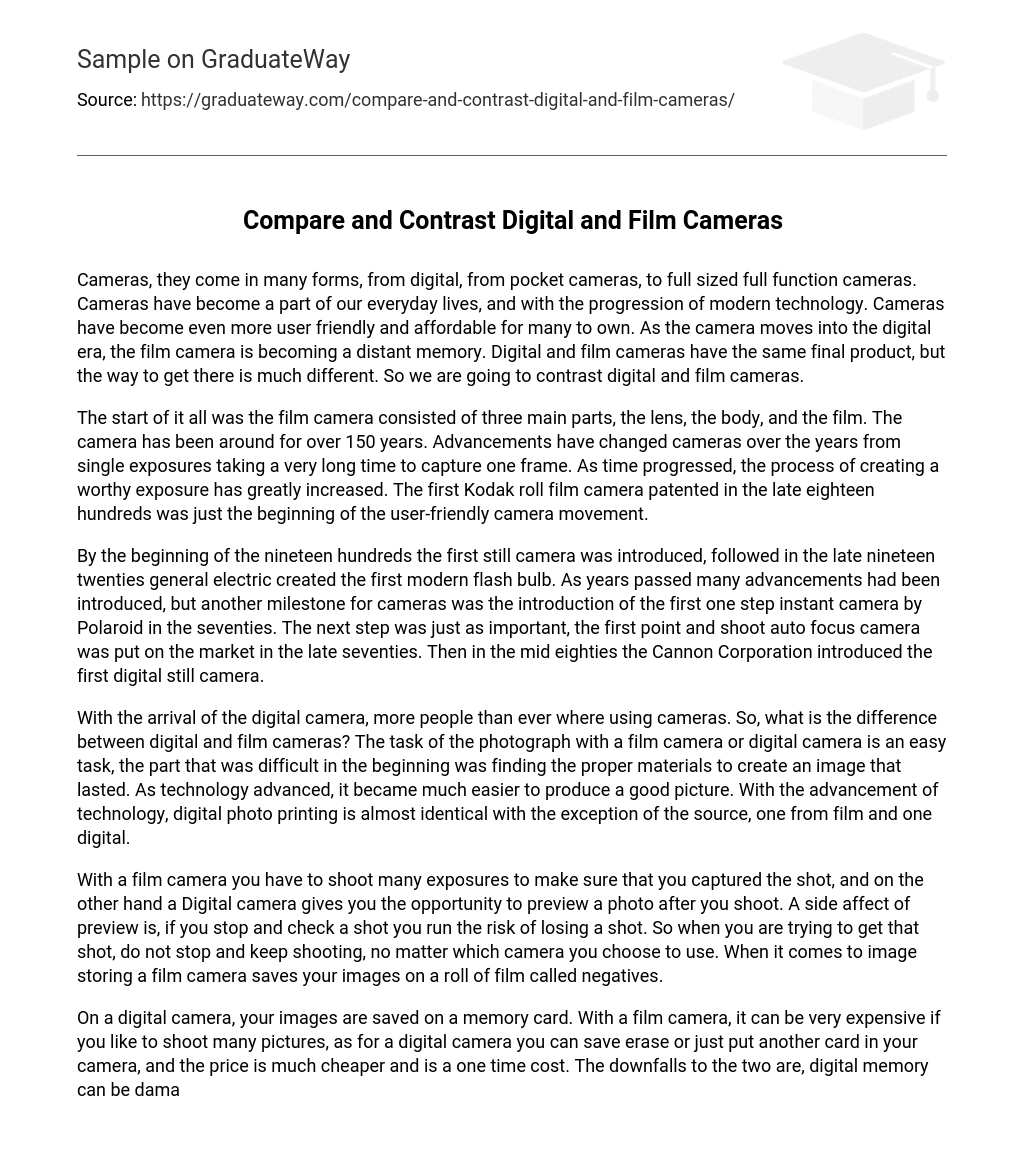Various types of cameras are now available, such as digital cameras, pocket cameras, and full-sized functional cameras. These devices have become an essential part of our daily lives due to technological advancements. Additionally, they have become more affordable and user-friendly over time. However, the rise of digitalization is rendering film cameras obsolete. Although digital and film cameras can yield similar results, their approaches to achieving these outcomes differ significantly. Hence, we will delve into the distinctions between digital and film cameras.
Camera technology has experienced significant advancements over the past 150 years, resulting in improvements to the lens, body, and film. These enhancements have greatly improved camera efficiency and the quality of exposures. In the late 1800s, Kodak introduced a user-friendly roll film camera that signaled a new era in camera technology.
In the early 1900s, the first still camera was created. In the late 1920s, General Electric introduced the first modern flash bulb. Over time, there were numerous improvements made to camera technology. But a major advancement happened in the 1970s when Polaroid released the first one-step instant camera. This was followed by the introduction of the first point-and-shoot autofocus camera in the late 1970s. Finally, Cannon Corporation launched the first digital still camera in mid-1980s.
As digital cameras gained popularity, more people started using them. The main difference between digital and film cameras is how they capture images. Both types of cameras used to be easy to use, but it was difficult to find materials for long-lasting photos. However, technology has made it much easier to create high-quality images. Nowadays, printing digital photos is similar to printing from film, except for where the image comes from.
When using a film camera, it is crucial to take multiple shots to guarantee the desired image is captured. On the other hand, with a Digital camera, one can preview photos after they are taken. However, there is a risk of missing an opportunity to capture a shot while previewing. Hence, regardless of the camera type, it is recommended to continuously shoot without stopping when trying to capture that perfect image.
In terms of image storage, film cameras use negatives for storing images on film rolls.
When using a digital camera, your images are stored on a memory card, providing convenient and affordable management. Unlike film cameras, where the cost of film rolls makes taking multiple pictures expensive, digital cameras allow for savings by enabling you to save, delete, or switch to another memory card at a lower price.
However, both options have drawbacks. Digital memory cards can be damaged by heat, water, or magnetic fields which may result in image loss. Similarly, film cameras are susceptible to damage from light, water and heat that can render your images unusable.
When comparing film cameras and digital cameras, it can be said that film cameras require more time to use. This is due to the need to switch rolls of film and adjust settings for perfect exposure. In contrast, digital cameras offer both automatic and manual options, as well as the quick task of changing memory cards, which allows for more time dedicated to taking pictures. Ultimately, the decision between film and digital cameras depends on individual shooting preferences. Do you value the artistic aspect of using a film camera or do you prefer the convenience of capturing moments with a digital camera whenever possible?
Both Polaroid cameras and digital cameras share the same goal of capturing and preserving moments for future generations. Whether it is done with traditional film or modern digital technology, people have always found ways to capture time using their cameras.
References:
The “Photography Timeline” by Mary Bellis from About.com (http://inventors.about.com/od/pstartinventions/a/Photography.htm) and “How Cameras Work” by Tom Harris from howstuffworks.com (http://www.howstuffworks.com/camera.htm) are both valuable resources for understanding the history of photography and how cameras function.





